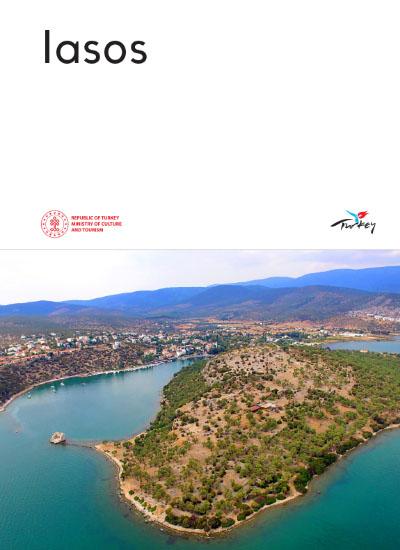Iasos is situated on a peninsula surrounded by the sea on three sides within the village of Kıyıkışlacık, 28 km from Milas. According to mythology, the city was founded by migrants from Argos and named after Iasos, the head of the colonists. There is no information about Iasos in ancient sources until the 5th century BC. The area where the city was founded was previously an island, but later the isthmus where the island meets the sea was filled and the island transformed into a peninsula. Important structures of the ancient city are located on this peninsula. The great city wall, aqueducts, tombs and the structure called the fish market are situated outside the city wall. Excavations in Iasos revealed that the oldest settlement in the city dates back to the end of the 3rd millennium BC. A musician who once visited the city gave a recital in the theatre. During this recital, when the bell sounded announcing the opening of the fish market, the audience, with the exception of an elderly gentleman who put his hand to his ear, jumped up and left the theatre. The musician approached the old man and said, "I owe you thanks for the respect you have shown me and my art, because all the listeners who heard the sound of the bell left." "What?" exclaimed the old man, "Did the bell ring? "Yes, why?" "Then with your permission, sir..." replied the old man and disappeared. Strabon recounts this anecdote to illustrate the affection of the Iasos people, who were unable to cultivate crops on their infertile soil, for fish. When Alexander the Great besieged Miletus in 334, Iasos provided a vessel to the Persian navy, which was assisting the city. Ten years later, an Iasian named Gorgos was in command of Alexander's armoury at Ekbatan. Another Iasian who attracted Alexander's attention was a boy named Hermias, who had the strange fate of being loved by a dolphin. It was a tradition in Iasos for boys to bathe in the sea after working in the gymnasium. At this time, a dolphin would approach the shore, take Hermias on its back, carry him offshore and then return him to the shore. According to one account, Alexander, who had heard the story, brought the boy to Babylon and made him a priest of Poseidon, the god of the sea. The people of Iasos were so impressed by this event that they included the depiction of the boy swimming with his arm thrown over the dolphin's back on their coins minted in the 3rd century BC. Since 1960, the Italian Archaeological Committee has conducted regular excavations in the ancient city of Iasos. These have yielded the discovery of several structures and many artefacts. The agora, constructed during the Roman period and surrounded by porticoes on four sides, is accessed through an arched gate. To the south-west of the agora is the bouleterion structure, one of the best preserved structures in Iasos. The original structure was constructed in the 4th century BC, at the time of the establishment of the city council. However, the arrangement observed today is believed to date from the 1st century AD. Other significant remains of the ancient city include the Zeus Megistos Sanctuary located adjacent to the East Gate, the Demeter and Korean Sanctuary situated at the southern end of the peninsula, and the renowned Artemis Astias Sanctuary.
MİLAS IASSOS ARCHAEOLOGICAL SITE


